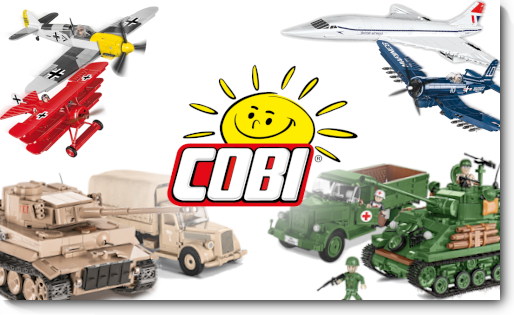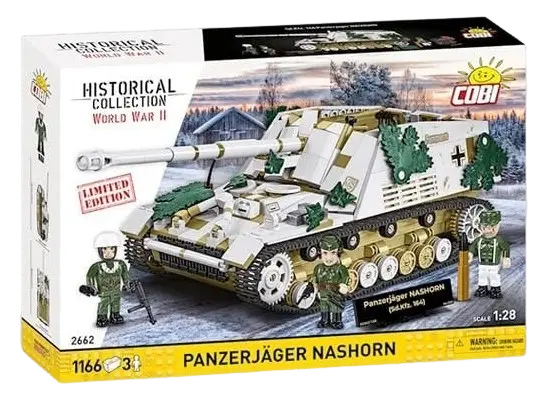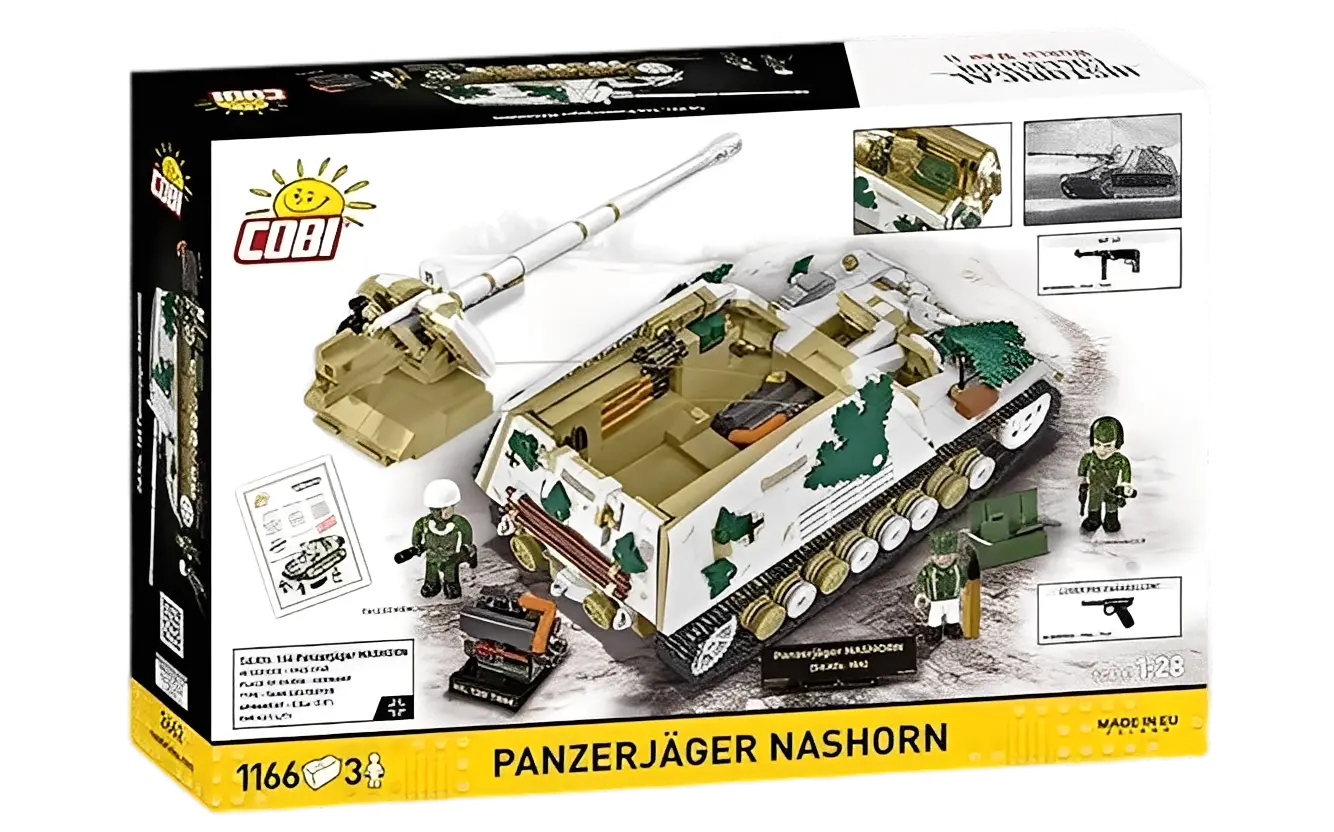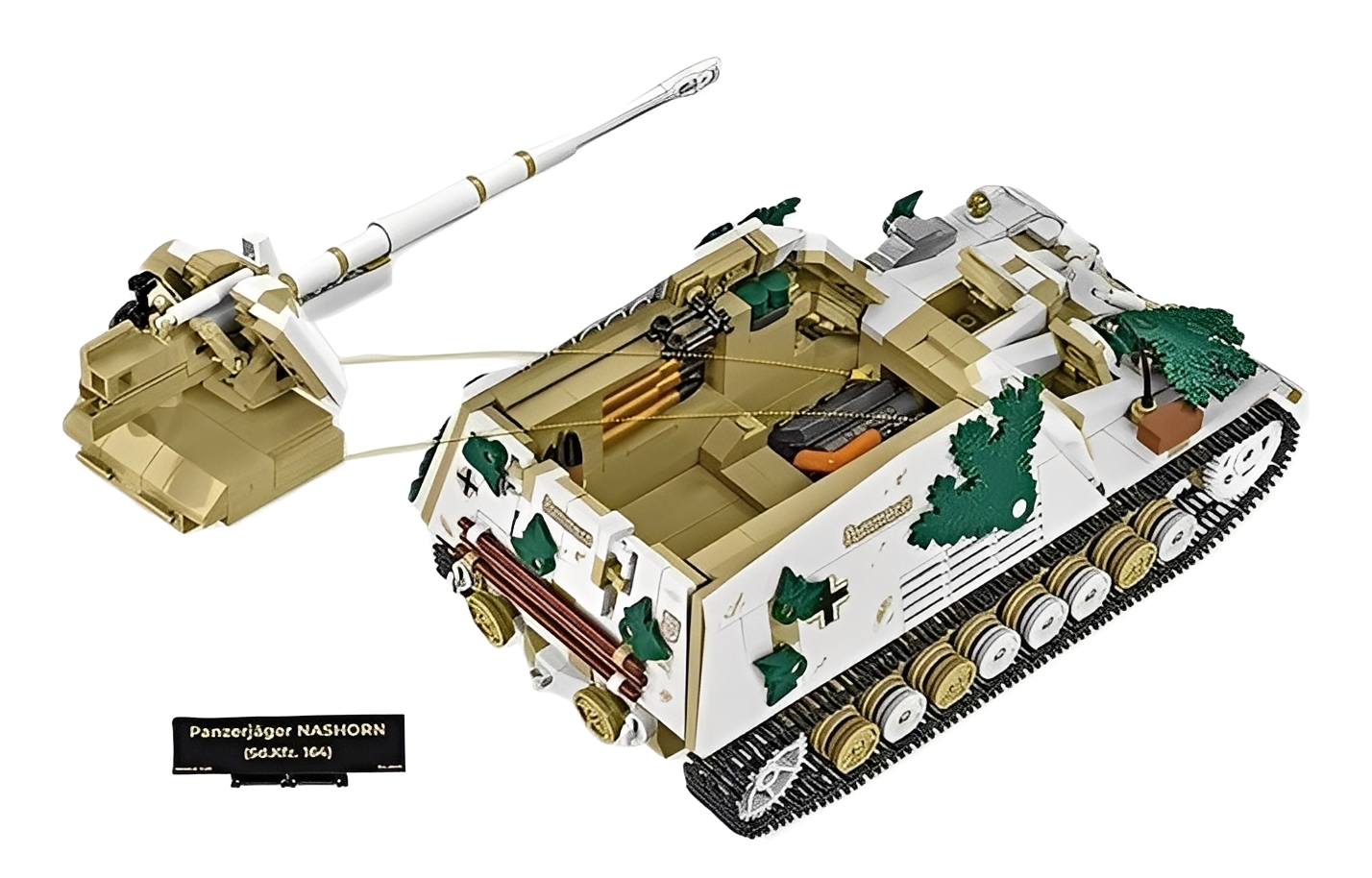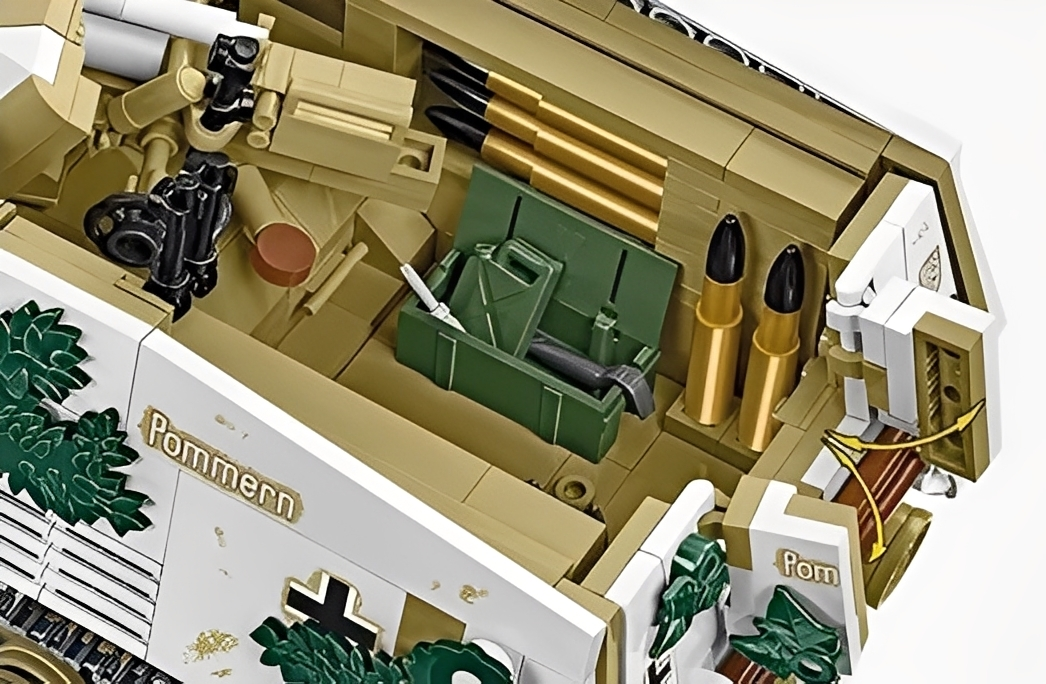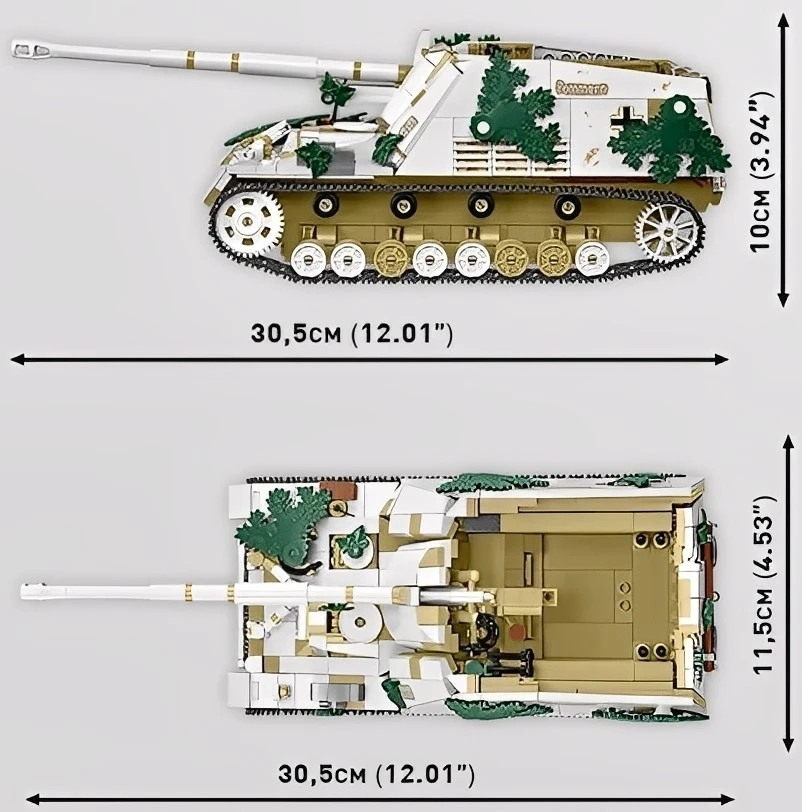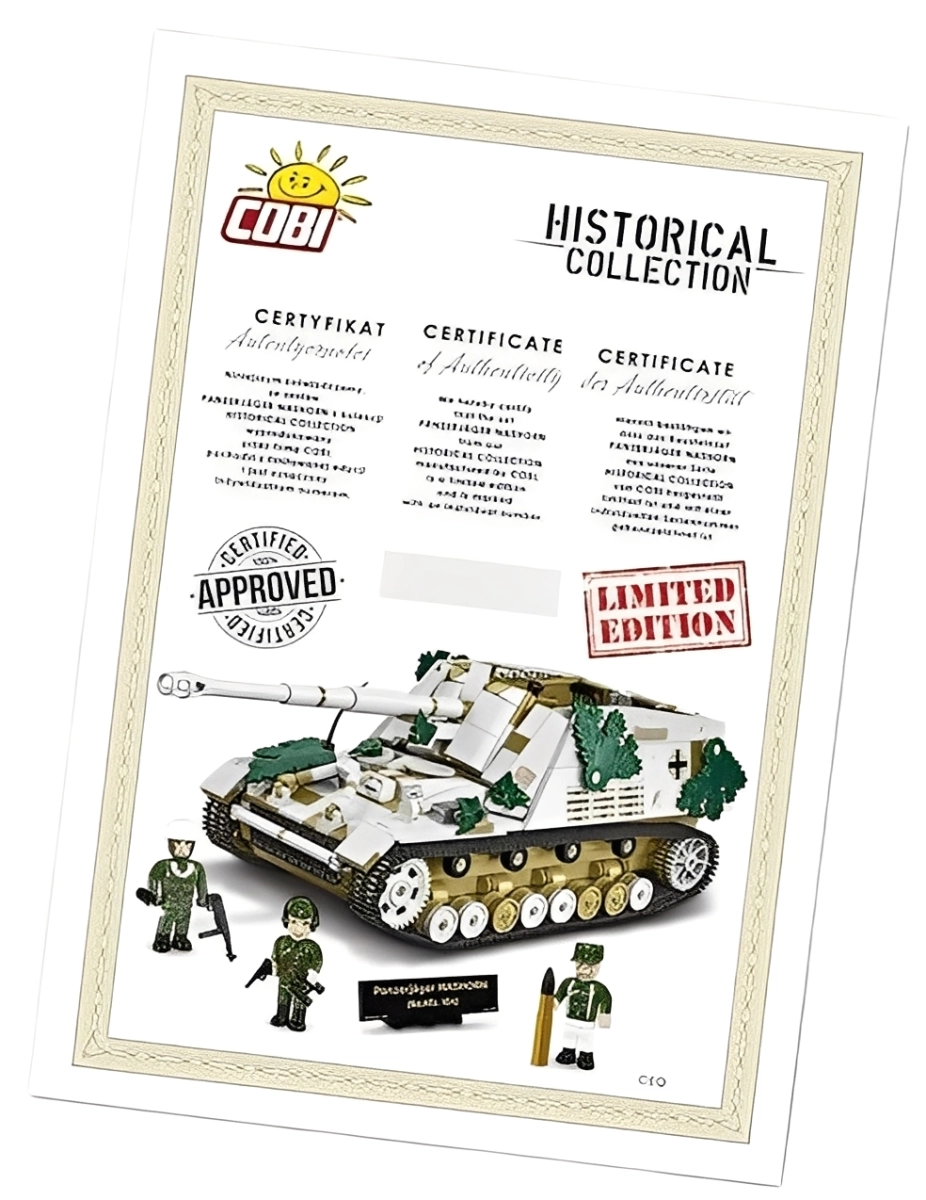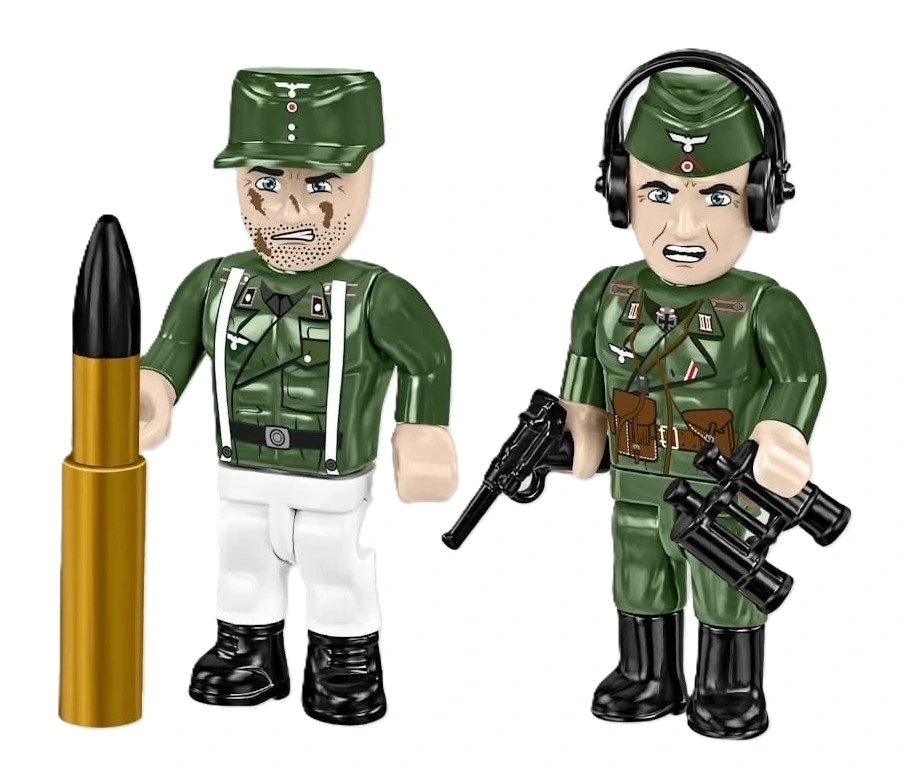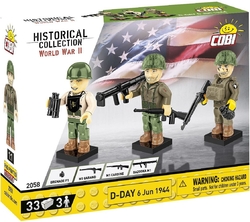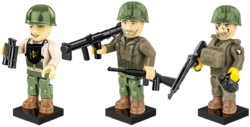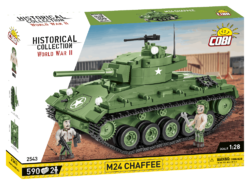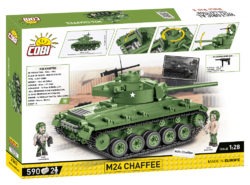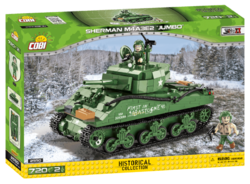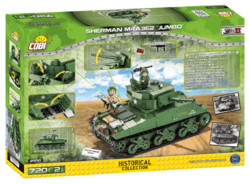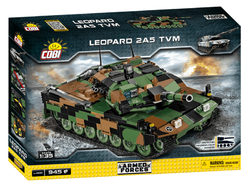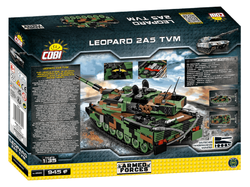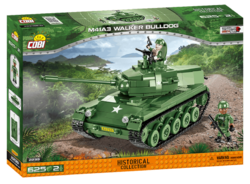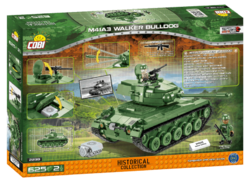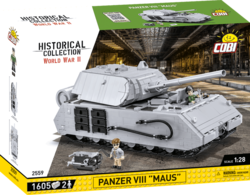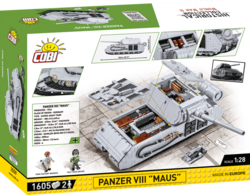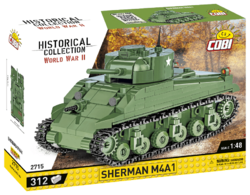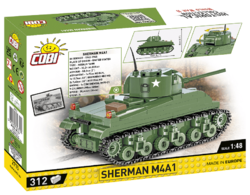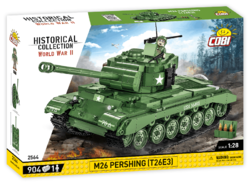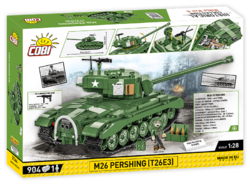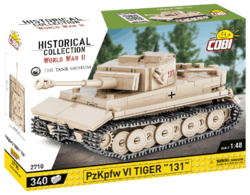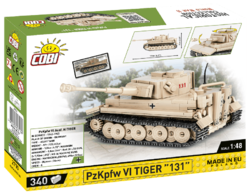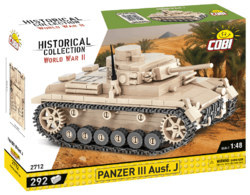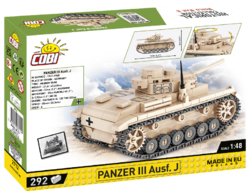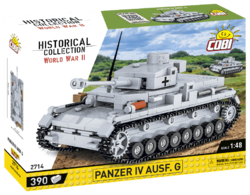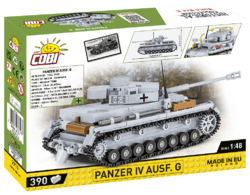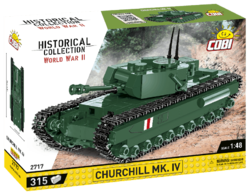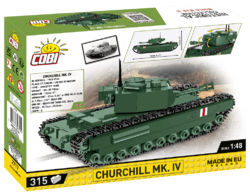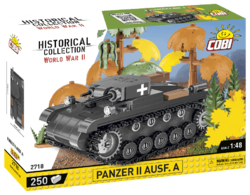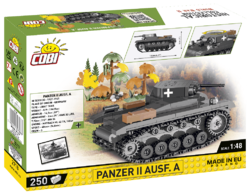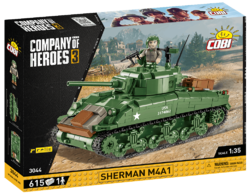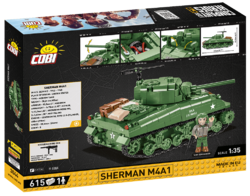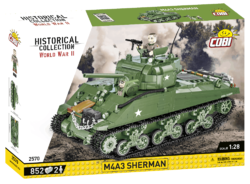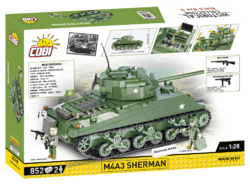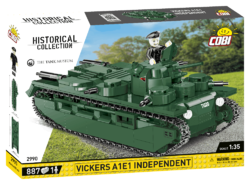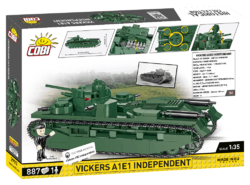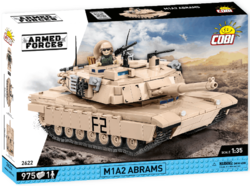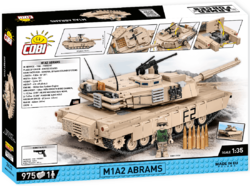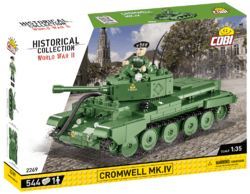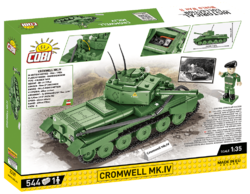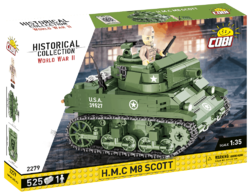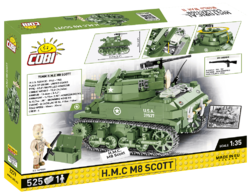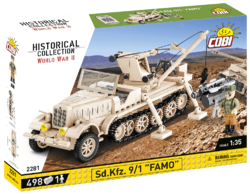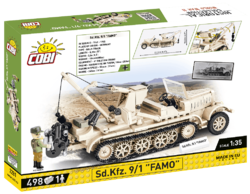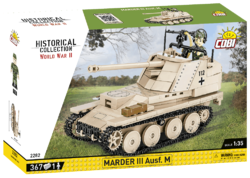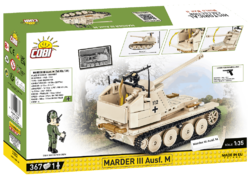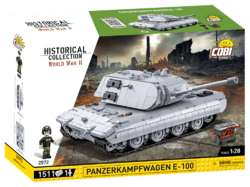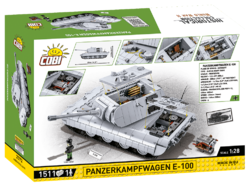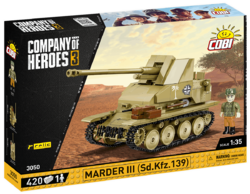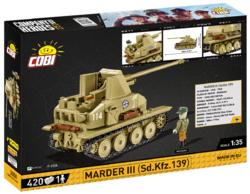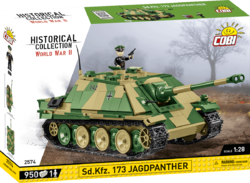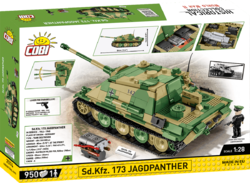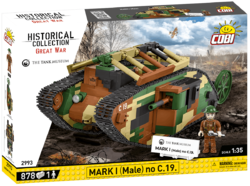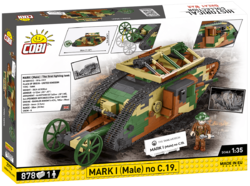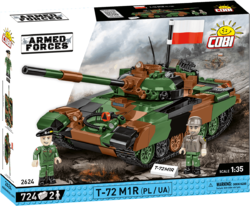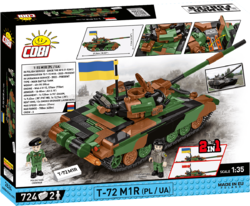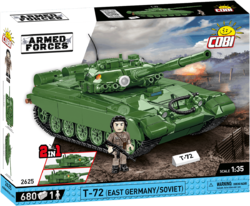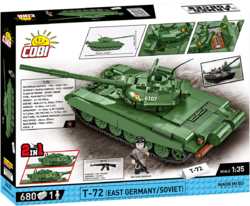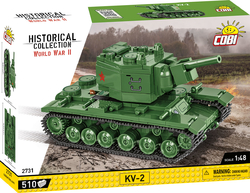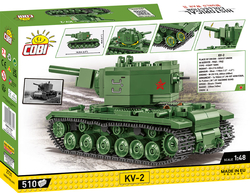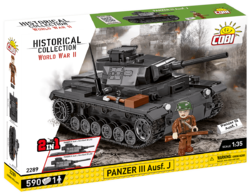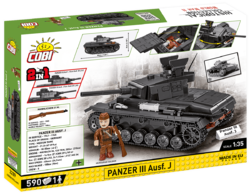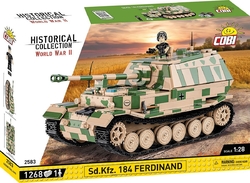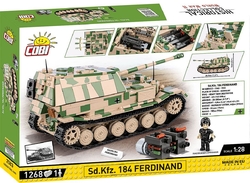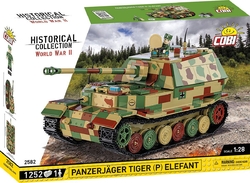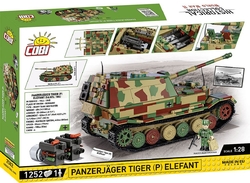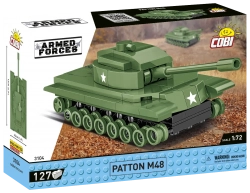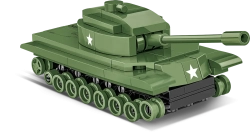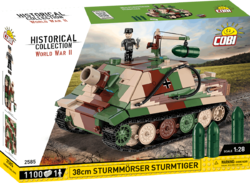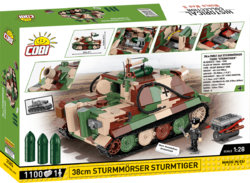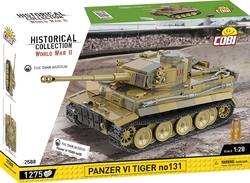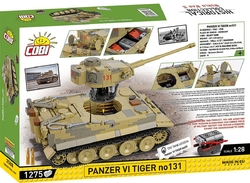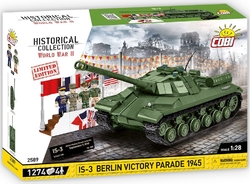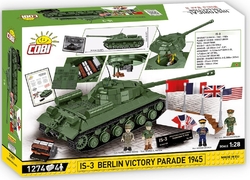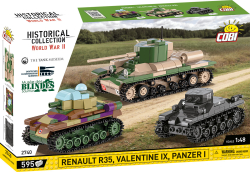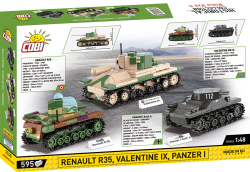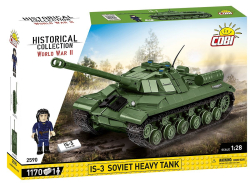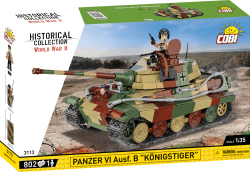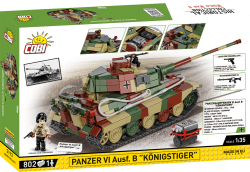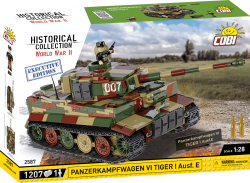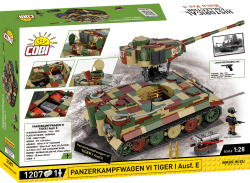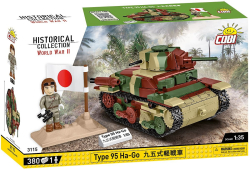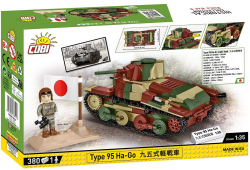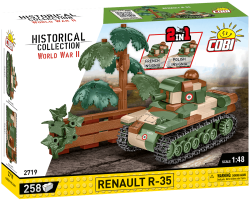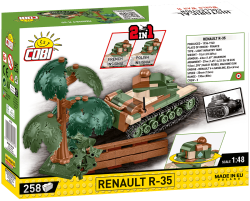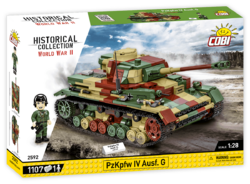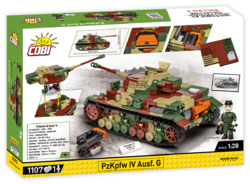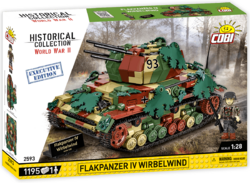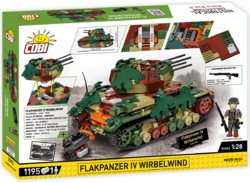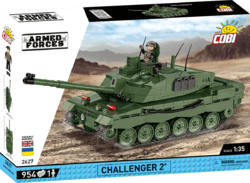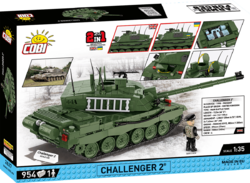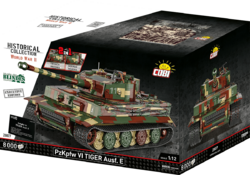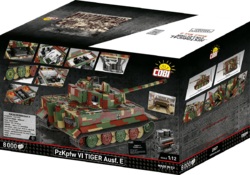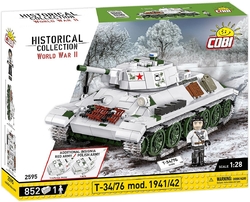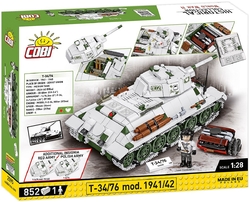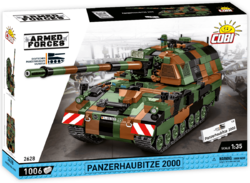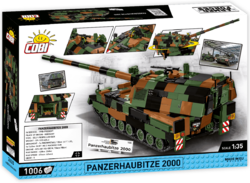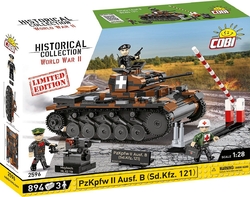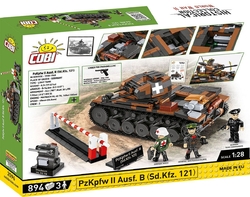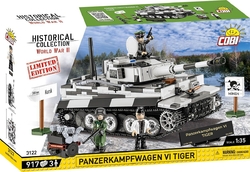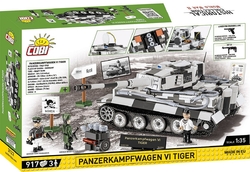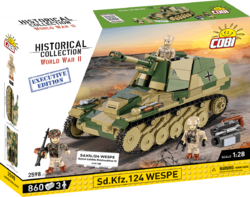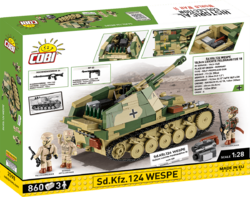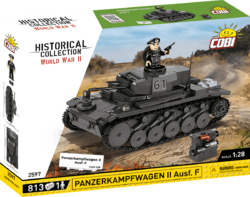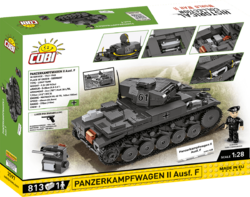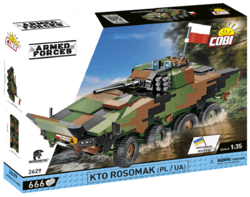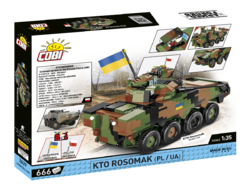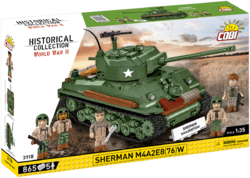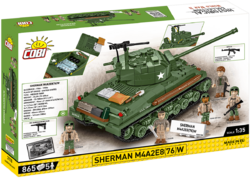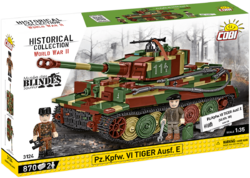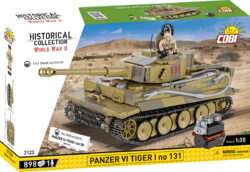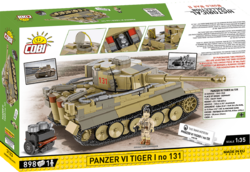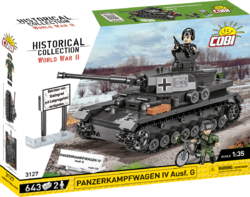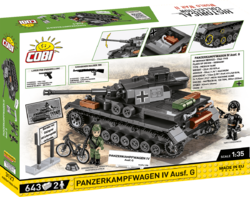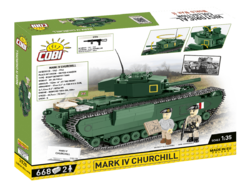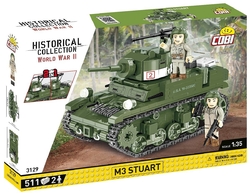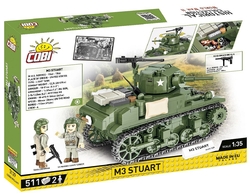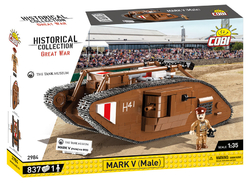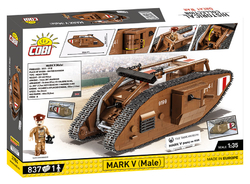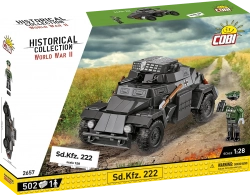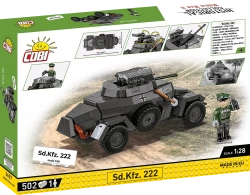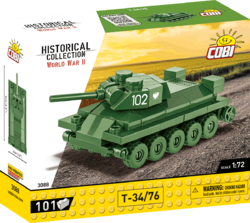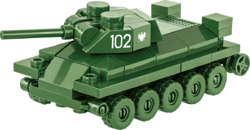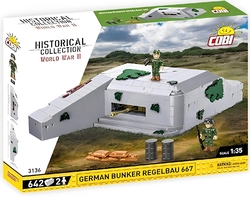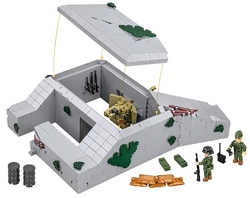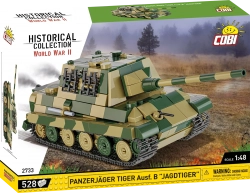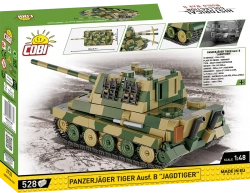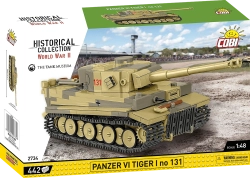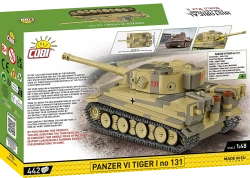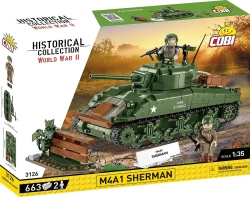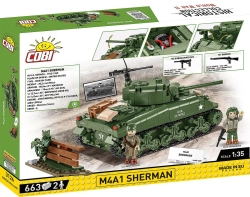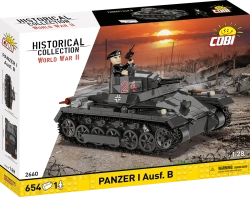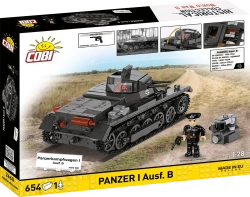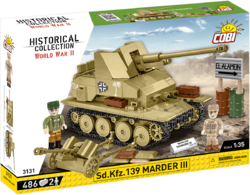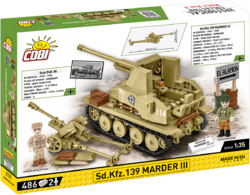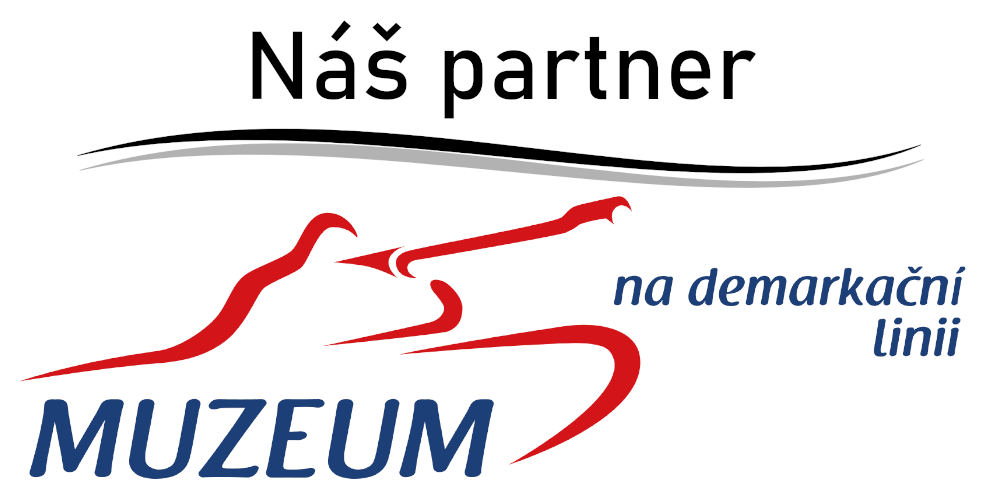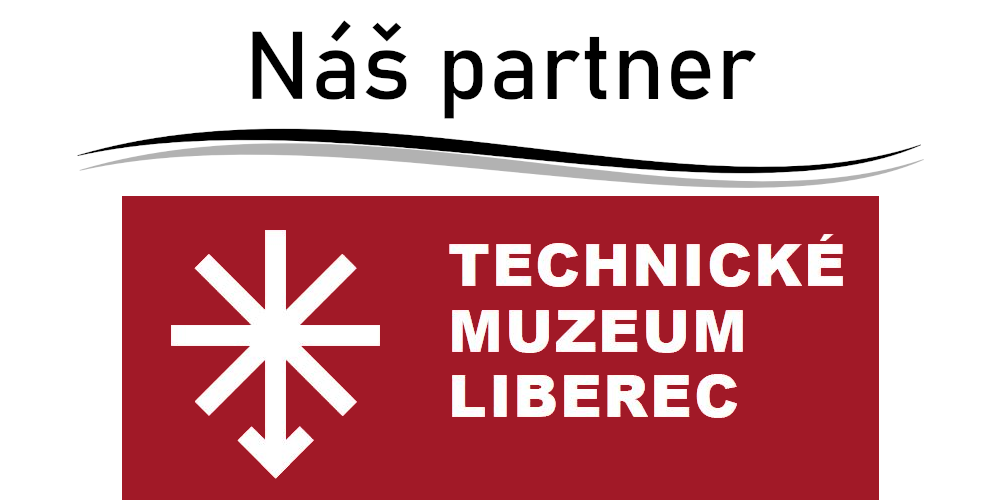| List Number: | COBI-2662 |
| Warranty: | 24 months |
| Manufacturer: | COBI |
| Loyalty Points: | 15 |

Did you know: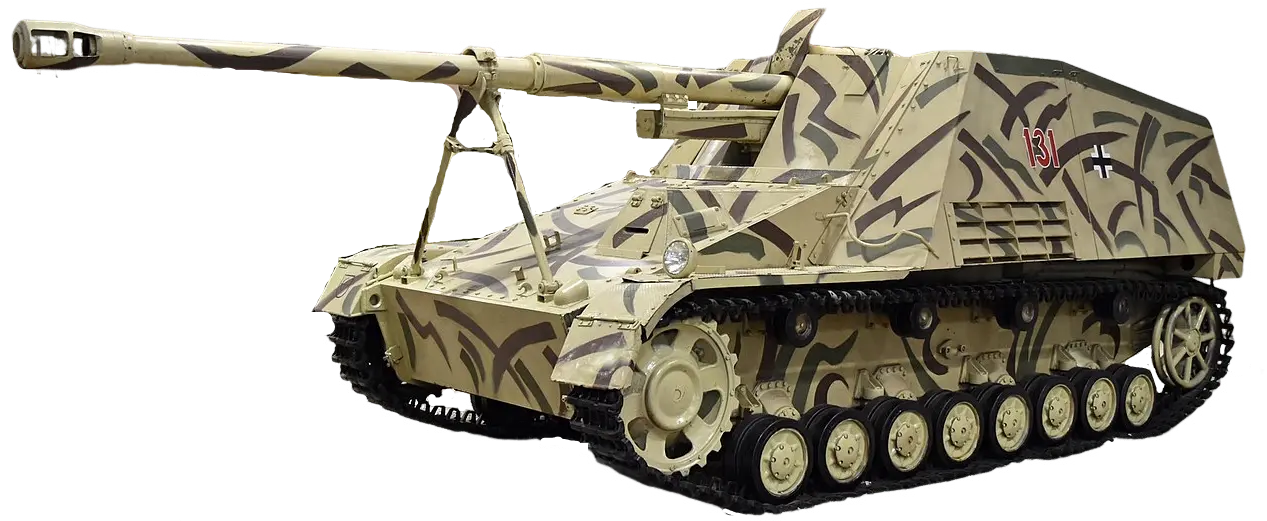
- The development order for the tank destroyer was issued by the German armament office in June 1942. The specification was: a light, agile vehicle with an 88 mm cannon capable of penetrating 160 mm of armor at a distance of 1000 meters.
- Two companies participated in the development: Krupp and Reinmetall. In the end, Krupp won with its PaK 43 cannon.
- Although the cannon was ready, even in 1943 there was no suitable new chassis available, so a temporary solution using the proven Panzer III chassis was adopted.
- The role of the tank destroyer was rapid assault, target destruction, and retreat. For this purpose, the vehicle had to be light and agile. The open armored superstructure had walls only 10 mm thick, so crew protection was limited.
- The combat superstructure was equipped with a tarp that could be attached with eyelets to the edges of the superstructure in bad weather. Its disadvantage was poor sealing, and in heavy rain the tarp was ineffective. Shooting with the tarp on was also problematic. It usually lasted only a few shots before tearing.
- An interesting solution was the fuel filler outlet directly into the combat cabin. The crew could refuel without leaving the vehicle. For long transfers on the Eastern Front, refueling while driving was allowed. During driving, the supply vehicle transferred the required number of fuel cans to the Nashorn. After emptying, the crew simply threw away the empty cans.
- The cannon was very effective. The long barrel provided high muzzle velocity. However, during fast driving, the cannon caused vibrations and misalignment of the sights. Therefore, a support was additionally installed on all early vehicles. Completely new sights, Sfl.Z.F.1a, were developed for this reason.
- The German army established a new organizational order for Nashorn vehicles, assigning them to battalions. Each battalion consisted of three companies, and each company of three platoons. One platoon had 4 Nashorns.
- The manual provided by the manufacturer for each produced unit stated that the installed cannon was capable of destroying enemy tanks at 4000 meters after aiming and at 2000 meters directly using built-in sights.
- In the combat report of one company of the 655th battalion from August 1943, it is stated that during battles near the city of Orel, the crew of one Nashorn managed to hit and destroy a Soviet T-34 tank at an incredible distance of 4200 meters. Another report confirmed that the hit tore the T-34 engine from the tank and threw it 15 meters away.
- The cannon proved itself effective, but crews had many complaints. Newly produced vehicles often arrived at the front unfinished. Field mechanics had to complete brakes or sights, for example.
- Approximately 494 units were produced in various versions. Only a few dozen survived until the end of the war.
Technical specifications: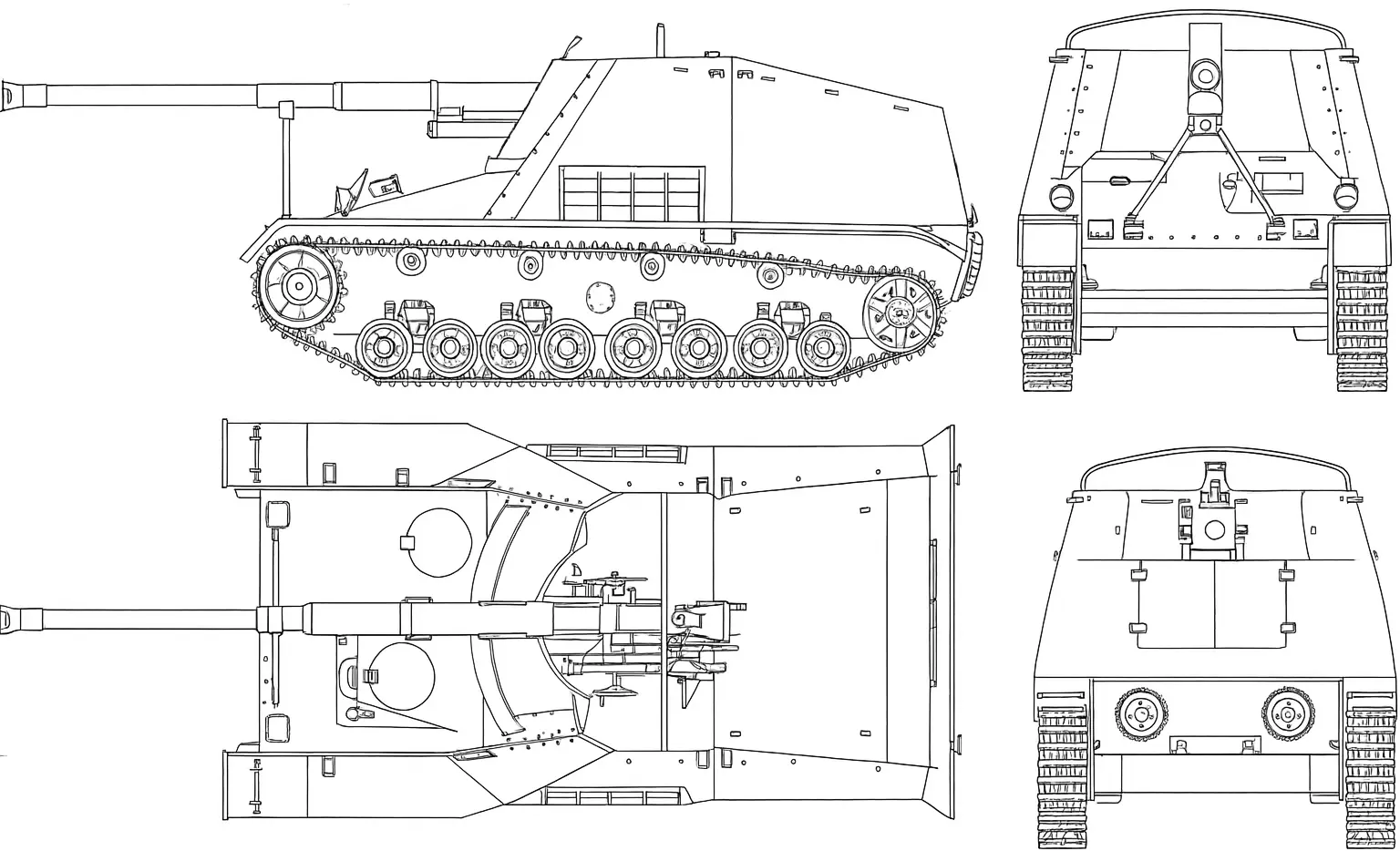
- Dimensions: length 7.26 m, width 2.95 m, height 2.94 m
- Weight: 24,000 kg
- Power unit: Maybach HL 120 TRM gasoline engine with 224 kW output
- Maximum speed: 42 km/h
- Range: 235 km on road, 130 km off-road
- Fuel tank capacity: 600 liters
- Armor: front 30 mm, side 20 mm, combat superstructure 10 mm
- Main armament: Pak 43/1L/71 cannon, caliber 88 mm
- Carried ammunition: 40 rounds of 88 mm caliber
- Secondary weapon: loose-mounted machine gun
- Crew: 4–5
From the memoirs of Lieutenant Albert Ernst, commander of the Nashorn tank destroyer:
“It was Christmas time, but the horrors of war did not ease. On December 23, 1943, we were sent on a counterattack to destroy advancing Soviet tanks near Vitebsk. We managed to reach a small hill unnoticed, from where we had a good view of the flat landscape ahead. Observing the winter landscape, where the sky meets the ground on the horizon, is very challenging. The light, intensified to a pale shine, wants to burn your eyes when glued to the rangefinder sight. It was not even noon when we spotted two waves of enemy armored vehicles. After a brief aiming, we opened fire. That day we destroyed 14 Soviet tanks. Some tried to return fire, but for their guns we were too far away.”
| Scale | 1 : 28 |
|---|---|
| Number of pieces | 1166 pcs |
| Number of figurines | 3 pcs |
| Dimensions after assembly | 30,5 x 11,5 x 10 cm |
| Recommended age | 8+ |
| Contains luminous blocks | No |
| Material | Plastic |
| Collection | World War II |
| Compatible with other brand of kits | Yes |





